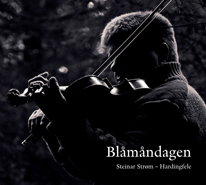![]() Aftenposten: Medrivende verdensmusikk
Aftenposten: Medrivende verdensmusikk
![]() GD: Berbisk og bra
GD: Berbisk og bra
NRK Musikkredaksjonen: Høyr intervju
Universitas: Jazz på berbisk
Gnawa er kjent som transemusikk og har blitt brukt i healingritualer i Nord- Afrika. Musikkformen har eksistert i svært lang tid og er et resultat av møtet mellom islamsk sufi, vestafrikanske tradisjoner og marokkos urbefolkning berberne. Med seg har han Ketil Kielland Lund som produsent og medmusikant.
Ketil studerte klassisk musikk som ung, men ble etterhvert mer opptatt av rytmisk musikk og musikk fra ikke-vestlige land, og han har spilt i en rekke Oslogrupper med bånd til ulike steder i Afrika. Aissa og Ketil traff hverandre første gang i et øvingslokale på midten av nittitallet. De spillte i bandene til bl a Cheb Hussein (Rai 2) og Mitchy (Mixed Blessings). Noen sagnomsuste fester i øvingslokalet ble forøvrig forløperen til klubben Nomaden i Oslo. Noen år senere startet de Tassili sammen med bl.a. musikerne rundt Mari Boine.
Tassilis musikk befinner seg i krysningspunktet mellom nordafrikanske og vestlige tradisjoner med Aissa som sanger og strengemann i sentrum. Instrument som blir brukt av gnawamusikere er sintir: et tre-strengers bassinstrument med skinnmembran, gargabb: metallkastanjetter, og bendir: en slags krysning mellom tamburin og skarptromme.
http://www.myspace.com/Tassilimusic
http://www.tassili.no
Aissa Tobi is from Morocco
Aissa Tobi is from Morocco and learned to play music from his grandfather as a child. His grandfather lived in northwestern Morocco, in the countryside outside of Souk El Arba, but his ancestors were from West Africa. The first music Aissa learned from him is called Gnawi, a local variant of Gnawa. Gnawa is a type of trance music which has been used in healing rituals in Northern Africa. The musical form has existed for nearly one thousand years and is a result of the meeting between classical Islamic Sufi, West African pre-Islamic traditions, and Morocco’s indigenous peoples, the Berbers.
The instruments used by the Gnawa musicians are the Sintir, a three-stringed skin-covered bass instrument; Gargabb, metal castanets; and the Bendir, a cross between a tambourine and a snare drum, without jingles in the frame. Aissa, who also has Arab and Berber roots, began in his early teens to play in weddings and for dance in various milieus in Morocco. In this way he picked up traditional music from several peoples, such as the Arabs, the Jews, and the gypsies. In addition to this, Aissa has worked with local village traditions such as regadda (from the Algerian border) and extensively with the Moroccan style Chabi, which is a newer and more collective mixture of the various traditions found in the country. It came into existence around the middle of the 1900s and was at first played on traditional instruments, but it gradually came to incorporate Western elements, including the fiddle, which is Aissa’s instrument in this genre.
Ketil Kielland Lund originally studied classical music as a child, but later became more absorbed by rhythmic music. He fell into the world music pot at the end of the 80s and has played in a number of Norwegian groups with origins in various locations in Africa, in this case North Africa. Aissa and Ketil met each other as musicians out in the field, and Tassili is the result of this meeting. Tassili’s music takes root at the crossing point between North African and Western traditions, with Aissa in the centre as singer and string-player.


















